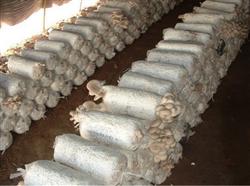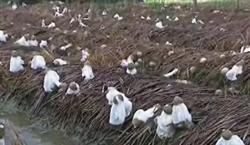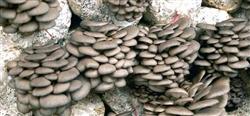How to cultivate Pleurotus ostreatus in midsummer?

How to cultivate Pleurotus ostreatus in midsummer? Please give guidance on the method of cultivating Pleurotus ostreatus in midsummer, usually using indoor bacteria and outdoor covering soil to produce mushrooms. Using the opposite cultivation method, burying bacteria in open field and cooling in the room can control the pollution of miscellaneous bacteria in the period of high temperature, which is beneficial to the growth and reproduction of Pleurotus ostreatus hyphae and increase the yield of Pleurotus ostreatus. First, strains and culture materials. High quality medium and high temperature strains are selected. According to the specific conditions, the following formula one is selected: cottonseed shell 97 kg, gypsum powder 1 kg, lime powder 1.5 kg, 50% carbendazim 100 grams; formula 2: 70 kg of rice straw, 20-30 kg of rape horn shell, 2 kg of compound fertilizer, 0.5 kg of urea and 1 kg of gypsum powder. Formula 3: 45 kg of rice straw, 40 kg of wheat straw, 13 kg of grain chaff, 1.5 kg of compound fertilizer and 1.5 kg of gypsum powder. In order to prevent miscellaneous bacteria infection, an additional 5 kg of plant ash was added to the above formula. Accumulate fermentation and set aside. Second, bagging and sowing. A 50 cm × 26 cm polyethylene barrel bag is used. Use thin dried rape stalks to grow a small bundle of 7 cm and 4 cm in diameter as a ventilation plug. Fasten one end of the plastic bag with a rubber band and bag the fermentation material. Before bagging, take a short piece of wood and punch a hole with a diameter and depth of 7 cm in the middle to insert into the rape rod bundle at the bottom of the bag. 15 kg of bacteria are used for every 100 kg of culture material. Among them, 13.5 kg bacteria were evenly mixed in 20 kg material, distributed in the bag mouth at both ends, 80 kg material was packed in the middle of the bag, and the remaining 1.5 kg bacteria were seeded on the surface of the bag mouth at both ends. After the material is loaded, punch a hole in the middle of the bag with a thin wooden stick 1.5 cm in diameter, and the upper mouth is made of rape stem bundle as a ventilation plug like the bottom. The length of the packed material bag is 35-40 cm. Generally, the 100 kg material can be packed in 54-56 bags. Third, bury the bag to send bacteria. Choose a flat, shady sandy ground and dig a pit 50 cm deep and 70 cm wide. The length of the pit depends on the number of material bags. Spread poisonous soil in the pit to prevent underground pests. Drill a hole with a diameter of 4-5 cm and a depth of 10 cm at the bottom of the pit 14 cm from the pit wall with a wooden pile, put the bacterial bag vertically, and plug the rape stem bundle into the hole. Punch holes and row bags in turn, and discharge two rows of bacterial bags in the pit. After filling the pit, fill the gap with lime soil (3 parts of lime, 7 parts of soil). The soil is 10 cm thick, and the air plug is tightly covered. The cover of the pit surface is required to be higher than the ground, showing the shape of the tortoise back. Finally, cover with wheat bran, rice husk or rape horn shell. Drainage ditches were opened around the pit to prevent Rain Water from flowing into the pit. After burying the bag for 15-20 days, the bag is full of mycelium and can be dug out. Fourth, take off the bag to produce mushrooms. Paste the four walls and top of the mushroom room with plastic film. Take advantage of the sunny and dewy ground to take off the bag (the bacteria bag is all white), roll off one bag (the plastic bag can be reused after washing and drying), leave it in the sun for 2-3 hours and then move it indoors and put it on the floor covered with wet sand. Spray water into space and wet sand twice every morning and evening (about 20 ℃) to keep the ground moist and lower room temperature. The window opens at 8 o'clock every night and closes at 7 o'clock the next morning. In this way, even if the outdoor temperature is above 37 ℃, there is still only about 28 ℃ indoors, and the air humidity is maintained at about 90%, which can ensure safe mushroom production. After the third tide of mushroom, change to mushroom wall or turn around to produce mushroom, fertilizer loose, sterilized vegetable garden soil, spray nutrient solution, you can harvest 2-3 more tide mushroom. Click to get more cultivation techniques of Pleurotus ostreatus
- Prev

How to control diseases and insect pests by planting Dictyophora after flood
How to control diseases and insect pests by planting bamboo shoot after flood? Please guide the pathogens that often occur in Dictyophora cultivation after flooding: slime mold, ash fungus, pests: slugs, termites, mites and other control methods are introduced as follows, for mushroom farmers' reference. 1. Slime mold occurs on bare soil or covered straw on bamboo shoot border.
- Next

How to grow Pleurotus ostreatus? Please introduce the technology.
How to grow Pleurotus ostreatus? Please introduce the technology of Pleurotus ostreatus is very suitable for substitute cultivation, such as bag cultivation, column cultivation, bed frame cultivation and sunny bed cultivation. Bag planting and column cultivation are the best, with high yield, good quality and high benefit. The advantages of bag cultivation of Pleurotus ostreatus: ① is beneficial to control the harm of miscellaneous bacteria and pests, and the success rate is high.
Related
- Fuxing push coffee new agricultural production and marketing class: lack of small-scale processing plants
- Jujube rice field leisure farm deep ploughing Yilan for five years to create a space for organic food and play
- Nongyu Farm-A trial of organic papaya for brave women with advanced technology
- Four points for attention in the prevention and control of diseases and insect pests of edible fungi
- How to add nutrient solution to Edible Fungi
- Is there any good way to control edible fungus mites?
- Open Inoculation Technology of Edible Fungi
- Is there any clever way to use fertilizer for edible fungus in winter?
- What agents are used to kill the pathogens of edible fungi in the mushroom shed?
- Rapid drying of Edible Fungi

